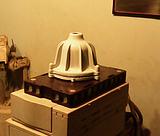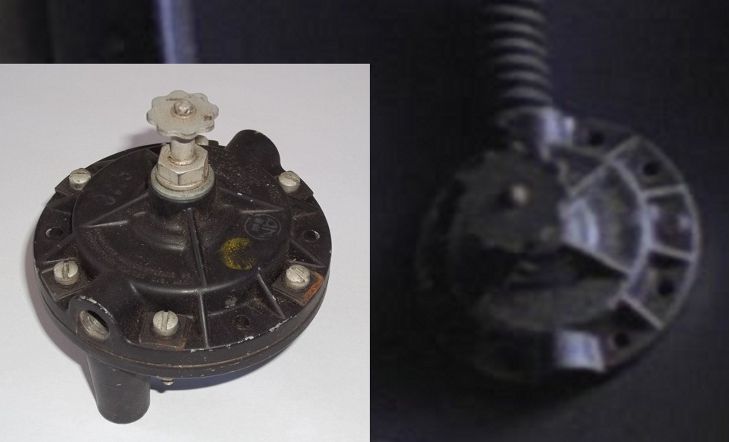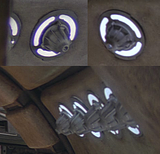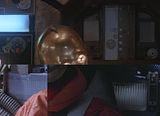Wavey
Sr Member
Got hold of the industrial light today, thought I would try and turn it in to a working ESB Falcon light - some time soon. Please excuse the Atari-like 8bit photo, it took me virtually minutes to learn how to take this authentic 70's looking picture... with my watch, lol.

Here's a rough outline of the backplate, which seems to follow the same diameter as the original light's reflector dish, at 230mm - but that doesn't come with the light fitting.
EDIT: Had to change the outline pic's inner circle as the diameter of the actual light cap is 5mm smaller than stated on the manufacturer's site - though the diameter of the inner circle is not that important as no light shines through the edge of that part - so it could be as small as you want.
Updated pic

The outline is as close as can be in proportions, as in the movie it looks like the plates are all hand cut, so all are slightly different. It will probably get re-drawn if I decide to send a blueprint off for someone to cut it properly in a solid heat-proof material. Any suggestions on where to get things like this cut (in or around London) in a good and cheap material for use with a 40watt bulb would be cool.
Will attach this one to a jazzed up reading or floor lamp, then eventually get one, two or five fixed in to a MF (ANH and ESB style) wall pad for display lighting.

Here's a rough outline of the backplate, which seems to follow the same diameter as the original light's reflector dish, at 230mm - but that doesn't come with the light fitting.
EDIT: Had to change the outline pic's inner circle as the diameter of the actual light cap is 5mm smaller than stated on the manufacturer's site - though the diameter of the inner circle is not that important as no light shines through the edge of that part - so it could be as small as you want.
Updated pic

The outline is as close as can be in proportions, as in the movie it looks like the plates are all hand cut, so all are slightly different. It will probably get re-drawn if I decide to send a blueprint off for someone to cut it properly in a solid heat-proof material. Any suggestions on where to get things like this cut (in or around London) in a good and cheap material for use with a 40watt bulb would be cool.
Will attach this one to a jazzed up reading or floor lamp, then eventually get one, two or five fixed in to a MF (ANH and ESB style) wall pad for display lighting.
Last edited:




